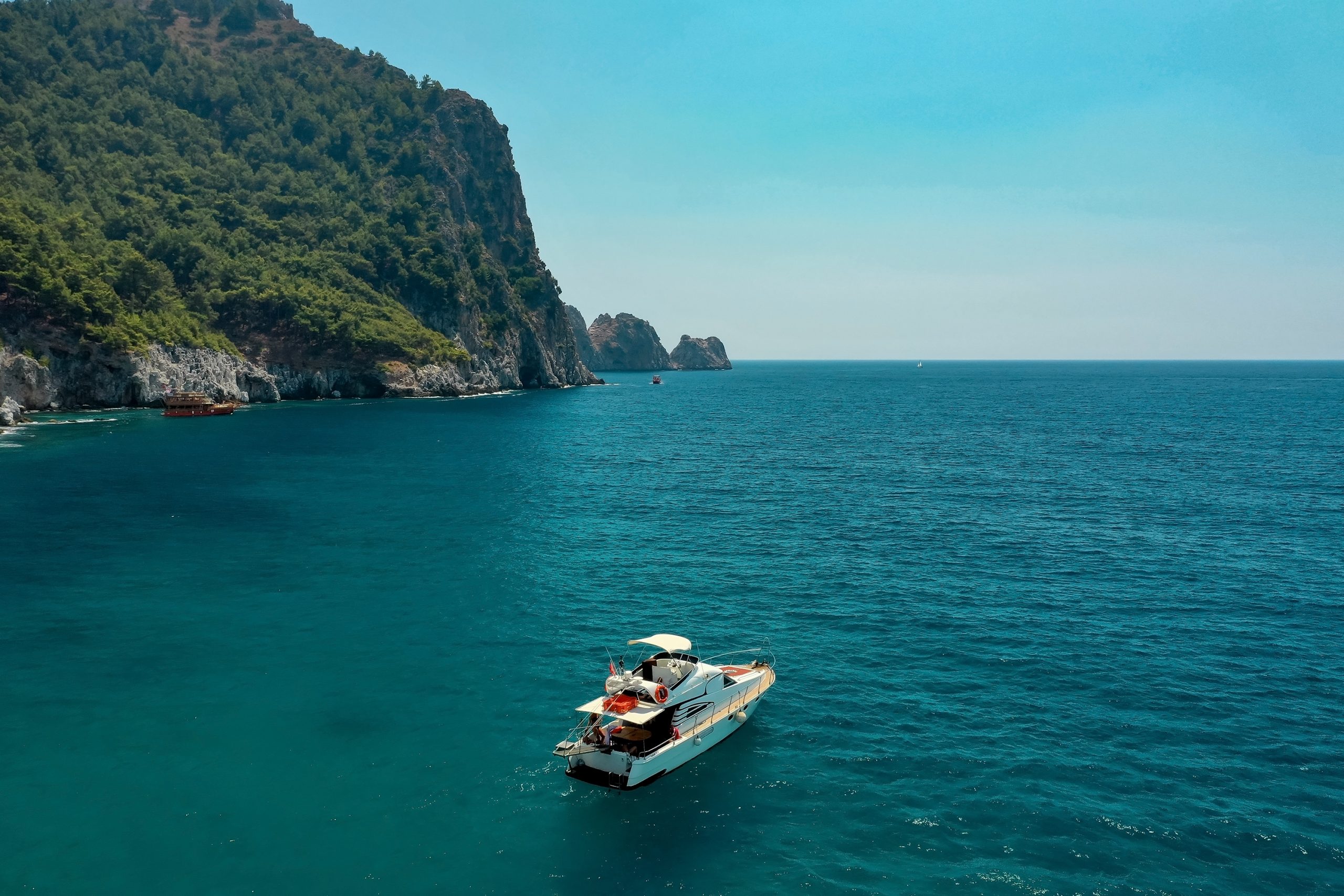Coastal and marine tourism, one of the fastest-growing segments of the global tourism industry[1], is already a well-established form of nature-based tourism and a key ocean economy activity around the world, making it foundational to countries’ transition to a sustainable ocean economy. If managed sustainably, it can play an important role in protecting marine resources and ecosystems, contributing directly through park fees and levies, as well as through philanthropy and investments by tourism businesses in biodiversity conservation to protect their asset base. Marine and coastal tourism is dependent on functioning, healthy ecosystems and marine and coastal resources that are in a good condition, incentivising tourism businesses to take care of these resources, and to invest in them, to ensure their own success and sustainability. Revenues from coastal and marine tourism can provide a platform for developing and growing other ocean economy activities. The related value chains and multipliers, such as accommodation, food, transport, guides, boats, and so on, are also extensive, creating employment and revenue for many local people, and contributing to development. These already established elements of marine and coastal tourism serve as foundational building blocks on which countries can rely as they transition to a sustainable ocean economy.
Diversification builds resilience
The diversity of tourism activities related to marine and coastal resources enables marine and coastal tourism to be more resilient, as the diversity of products and services which can be offered is extensive, employing many people and creating extensive, important value chains across numerous sectors. Activities such as diving, fishing, snorkelling, visiting fishing villages, sailing, surfing, kayaking, whale-watching, sea bird-watching, watching turtles nest and hatch, and simply relaxing on a beach attract tourists with diverse motivations for travel, different abilities to spend time and money and different preferred activities. These well-established ocean economy activities provide important revenues for investment in other areas of the ocean economy and can be combined, and operated in conjunction, with numerous other ocean economy activities, including mangrove carbon projects, seaweed farming and the like. Overreliance on any one ocean economy activity increases risk. Using coastal and marine tourism as a foundation and building on this by diversifying activities will strengthen resilience, create more employment and increase revenues.
Case study: Masoala Forest Lodge, Madagascar
Given the threats of climate change, marine and coastal conservation, and related tourism, need more political support from governments and the international conservation community, as well as recognition of the contributions that the private sector can make to both effective conservation area management and the livelihoods of local people. Ecotourism, conducted sensitively and sustainably, can be an important contributor to marine conservation and the broader ocean economy.
One example is the Masoala Peninsula in northeast Madagascar. In this region, three marine protected areas were established in 1997 under Masoala National Park: Tampolo, Ambodilaitry Masoala and Tanjona. In addition, from 2007 onwards, a series of 27 locally managed marine areas (LMMAs) were organised throughout the Antongil Bay landscape under the MaMaBay programme of the Wildlife Conservation Society in order to sustainably manage marine resources for local residents. In 2013, Madagascar’s government adopted the Antongil Bay Fisheries Management Plan, giving access rights to fishers living adjacent to these LMMAs. In 2015 these fishers were organised under the Federation of Fishermen of Antongil Bay, a body recognised by the region and the Ministry of Marine Resources and Fisheries. In reality, many non-resident outsiders utilise these resources illegally and for commercial purposes; as with protected areas around the world, budgetary constraints mean that protection is sometimes inadequate. In the absence of greater financial resources, one mechanism that has proven successful in mitigating illegal use is the presence of ecotourism operators, employment of local people in ecotourism and the payment of fees to the national park by ecotourism operators, a combination that gives the natural resources an alternative economic value.
Masoala Forest Lodge (MFL), established in 2003, straddles the Ambodiforaha LMMA and the Tampolo Marine Reserve and depends on an intact and appealing ecosystem to attract tourists. As with most ecotourism operations, its two greatest contributions to the local economy are employment of local staff and payment for use of the protected area. In 2019 MFL employed 34 staff from the local villages of Ambodiforaha, Marofototro, Navana and Cap Masoala, and used a total of 1,788 park tickets for its guests and guides, valued at 55,236,500 ariary (approximately 14,000 euros). While the first of these provides an alternative source of income for the local community, the second contributes to the operational budget of the park. In addition, in 2012 MFL started a campaign against non-biodegradable waste by forming a women’s group, providing refuse disposal receptacles in the nearby villages and using its own boats for weekly waste removal from these villages to the regional capital of Maroantsetra. The lodge by then already had a policy of not using single-use plastic. Additional activities include weekly beach clean-ups to remove plastic washed up on the beaches. The ecotourism business operations follow commercial principles for maximising revenue and promoting cost-effectiveness to ensure a sustainable revenue stream for MPA activities, exemplifying a successful business-oriented approach to sustainable and effective MPA management and to building a sustainable ocean economy.
Ensuring that marine and coastal tourism acts as a building block for a sustainable ocean economy
In order to support growth as countries transition to a sustainable ocean economy, key considerations for marine and coastal tourism include the following:
- Align tourism and conservation objectives, with tourism businesses investing in the asset base (marine and ocean resources) on which they rely, thereby safeguarding marine and coastal ecosystems, as at Zanzibar’s Chumbe Island[2]. Since tourism, if not managed properly, can damage ocean resources, ecosystems and landscapes, specific coastal and marine tourism sustainability criteria and standards should be developed, as should related monitoring and evaluation plans and protocols to prevent overtourism, maximise benefits and minimise costs.
- Grow the value chains by increasing the use of local suppliers of goods and services. Capacity building for these suppliers will ensure sustainable provision of the required quality and quantity of goods and services. For examples, see the Tourism Enterprise Partnership in South Africa[3]. Tourism value chains need to be made more sustainable in their use of ocean resources. This will increase the tourism multipliers, and thereby employment and household incomes, while also conserving ocean resources in the long term. Capacity building for suppliers should ensure alignment with conservation objectives.
- Promote linkages between human health and a sustainable ocean economy. Conservation and investment in the ocean economy, and the resources on which this economy depends, will be essential to prevent future pandemics and ensure long-term sustainability[4]. Clear linkages should be emphasised between conservation and tourism. The two should be interdependent, since sustainably managed tourism can support conservation and sustainable conservation is essential to viable nature-based tourism.
- Facilitate collaboration and partnerships among the private sector, local communities, non-governmental organisations, government and academia. Such partnerships should focus on the business of conservation by promoting sustainable ocean and marine tourism, integrating conservation, benefit-sharing[5] and capacity building to build long-term resilience.
- Continuously innovate and adapt to ensure the sustainability of marine and coastal tourism, not only in the products and services offered but also in the integration of other ocean economy activities to promote diversification and grow the broader ocean economy.
- Further grow marine and coastal tourism’s existing diversity of products and services, which ensures greater resilience than is found in most other forms of nature-based tourism. Long-term resilience will require not only maintaining and sustaining this diversity but also integrating other ocean economy activities into or alongside the tourism product. For example, a mangrove carbon project could combine with bird-watching ecotourism, or local community members might sustainably harvest or farm fish or seagrass in an ecotourism area. For example, in KwaZulu-Natal, South Africa, Gugulesizwe Camp offers ecotourists a boat excursion to a local village, where they learn about sustainable fish harvesting using traditional methods and local foods collected from the coastal area[6].
- Raise awareness among local and international tourists, encouraging them to ask questions and ensure that the marine and coastal tourism they are engaging in is sustainable and contributes to local economies and biodiversity conservation. One can also use tourism as a tool to educate and raise awareness among tourists, staff and all related stakeholders, including local communities, about the importance of conserving marine and coastal resources to grow and develop the ocean economy. For example, Chumbe Island (Zanzibar) provides environmental education for youth groups, raising awareness about the importance of marine conservation[7]. More broadly, across Africa, the ecotourism company Wilderness Safaris runs a programme called Children in the Wilderness, which provides environmental education to children living in or near conservation areas[8]. More broadly, other community development and education programmes have also been shown to increase support for conservation[9].
- You can’t manage what you don’t measure. Better data can strengthen understanding of the economic, social and environmental costs and benefits of marine and coastal tourism, as well as the role these play in the ocean economy and how benefits can be maximised to support and develop other elements of a sustainable ocean economy.
To transition to a sustainable ocean economy, we must ensure that marine and coastal tourism, as the building block, is itself sustainable: economically, socially and environmentally. Diversified, far-reaching and sustainable value chains, equitable benefit-sharing schemes and capacity building in the sustainable management of ocean resources and related tourism businesses will provide a solid base on which to build a sustainable ocean economy. This can enhance the tourist experience, improve local socioeconomic conditions, provide important capital for growing other areas of the ocean economy and contribute to biodiversity conservation, through direct and indirect investments in the conservation of marine and coastal resources.
—–
[1] Leposa (2020) in D. Dimitrovski, A. Lemmetyinen, L. Nieminen and T. Pohjola, “Understanding Coastal and Marine Tourism Sustainability: A Multi-stakeholder Analysis,” Journal of Destination Marketing and Management 19 (March 2021), https://doi.org/10.1016/j.jdmm.2021.100554.
[2] R.C. Buckley, Conservation Tourism (Oxford, UK: CABI, 2010); S. Snyman and A. Spenceley, Private Sector Tourism in Conservation Areas in Africa (Oxford, UK: CABI, 2019).
[3] C.M. Rogerson, A. Benkenstein and N. Mwongera, “Coastal Tourism and Economic Inclusion in Indian Ocean Rim Association States,” Africa Portal, 18 October 2018, https://www.africaportal.org/publications/coastal-tourism-and-economic-inclusion-indian-ocean-rim-association-states/; J. Mitchell and C. Ashley, Tourism and Poverty Reduction: Pathways to Prosperity (London: Routledge, 2010).
[4] World Economic Forum, The Global Risks Report 2021, 16th ed., https://www3.weforum.org/docs/WEF_The_Global_Risks_Report_2021.pdf.
[5] S. Snyman and K. Bricker, Living on the Edge: Benefit-Sharing from Protected Area Tourism (London: Routledge, 2021); Snyman and Spenceley, Private Sector Tourism.
[6] Big Skies, “Welcome to Gugulesizwe,” https://bigskies.travel/maputaland/gugulesizwe/.
[7] Snyman and Spenceley, Private Sector Tourism.
[8] Children in the Wilderness, home page, https://www.childreninthewilderness.com.
[9] S. Snyman, “Assessment of the Main Factors Impacting Community Members’ Attitudes towards Tourism and Protected Areas in Six Southern African Countries,” Koedoe 56, no. 2 (2014), doi:10.4102/koedoe.v56i2.1139.


 Previous
Previous


